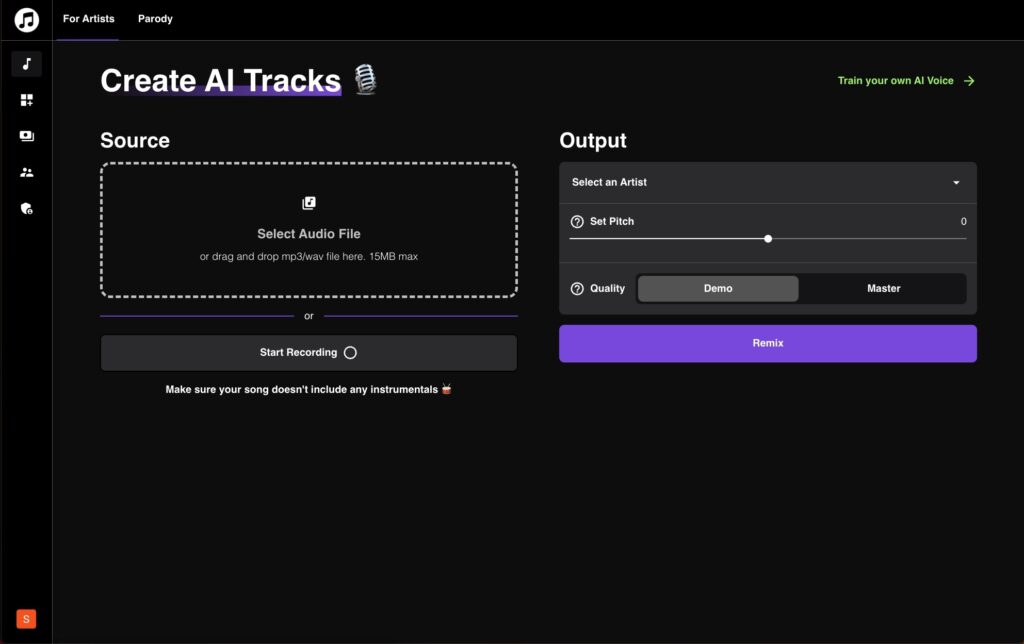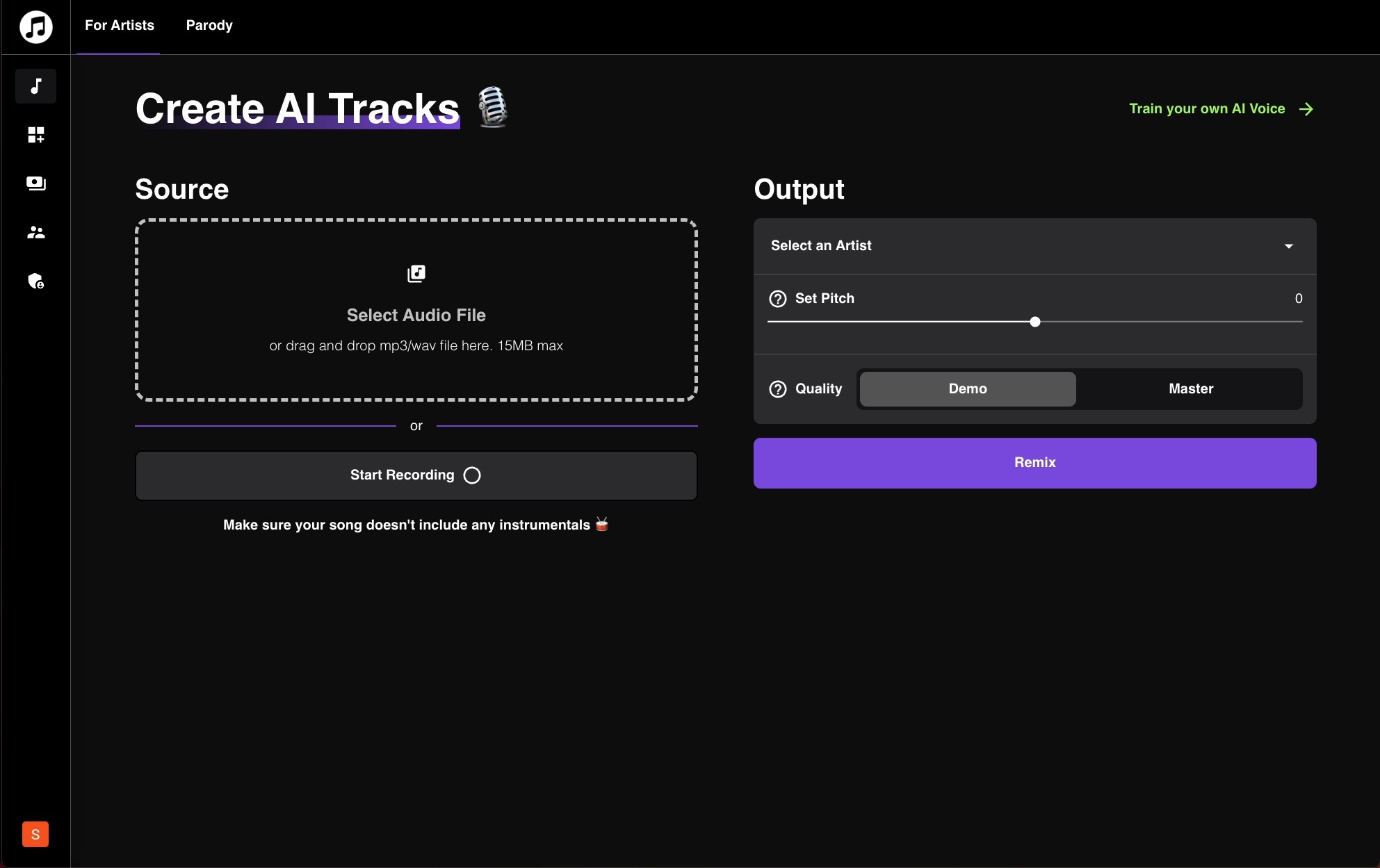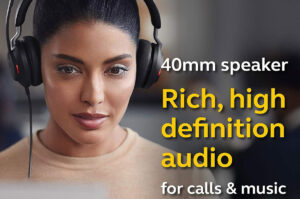Exploring the Artistry of AI with Musicfy Review
Welcome back to our deep dive into the world of Musicfy, the revolutionary AI-powered music platform. In this segment, we’ll take a closer look at how to harness the full creative potential of Musicfy and address some of the intriguing questions that have arisen from the community.
Is Real-Time AI Music on the Horizon?
One of the most common inquiries is whether the mesmerizing musical transformations seen in my videos happen in real-time. The short answer is not yet, but we stand on the cusp of exciting possibilities. The rapid advancement of AI and machine learning suggests that real-time AI music creation might be just around the corner. As we witness the swift progress of technology, it’s not far-fetched to imagine a future where musicians can interact with AI models in real-time, creating music on the fly.
Demystifying Musicfy and Plugins
Another frequent query revolves around Musicfy being mistaken for a plugin, particularly Doubler 2 by Fugue. To clarify, Musicfy is distinct from Doubler 2. While Doubler 2 excels in audio-to-MIDI conversion, Musicfy takes things several steps further. It’s all about crafting instrument models through the marvels of AI and machine learning, delivering results that are intricately detailed and remarkably lifelike.
Now, let’s unravel the process of using Musicfy:
Selecting Your AI Music Adventure
As you embark on your musical odyssey with Musicfy, it’s vital to understand that several websites and services offer similar capabilities. Some are freely accessible, while others necessitate a subscription. The exciting part is that, regardless of your choice, the underlying technology remains quite similar, ensuring that your musical journey will be a rewarding one.
For the videos you’ve seen, I’ve opted for Musicfy, and I’ve conveniently provided a link in the description for your access. Musicfy empowers you to transform your voice into something entirely unexpected or even craft your AI voices. You can take it for a test spin without any charge, but to bring your unique AI model to life, you’ll require a subscription.
Subscription Options Made Simple
Musicfy extends various subscription tiers, with the most budget-friendly option starting at just $10 per month. This subscription grants you access to unlimited generation, standard processing speed, standard sounds, and, most importantly, the capability to develop your custom voice model. There’s also an annual subscription choice for those committed for the long haul. However, if you’re merely testing the waters, the monthly option is your best bet.
Preparing Your Sonic Palette
Before immersing yourself in Musicfy’s magic, some preparatory groundwork in your Digital Audio Workstation (DAW) is in order. Here’s a step-by-step breakdown:
1. Gather Your Instrument Samples: To craft your AI model, you’ll need a collection of instrument samples. Opt for dry samples without any reverb or delay effects for the best results.
2. Embrace Diversity: Variety is key. Ensure your samples span different note ranges, articulations (like slides and glides), and durations (ranging from sustained notes to staccato). This diverse collection of samples contributes to the authenticity of your AI model.
3. Sample Duration Matters: Aim for a substantial dataset – at least four to five minutes of samples. A comprehensive dataset ensures that your AI model possesses depth and richness.
Birthing Your AI Model with Musicfy
With your instrument samples in hand, it’s time to bring your AI model to life using Musicfy:
1. Upload Your Samples: Navigate to your Musicfy dashboard and click on “New Voice.” Give your model a name (e.g., “Saxophone”), select your desired quality setting (bear in mind that higher quality requires more training time), and upload the consolidated WAV file containing your instrument samples.
2. Start Training: Click “Start Training,” and the AI will commence its work. The duration of training hinges on the quality setting you’ve chosen and can span up to one or two hours.
3. Ready for Remixing: Once your model reaches completion, a blinking green dot will signal its readiness. Click “Create Track” to embark on a musical adventure with your AI model.

Let the Music Flow
Now comes the thrilling part – creating music with your AI model. You can either record your musical input and upload it, or you can record directly in your browser. Once you have your input file, select your desired quality setting (standard is a great choice for experimentation) and hit “Remix.” In around 20 seconds, your AI-generated music will be primed for playback.
You’ll discover that Musicfy can adeptly mimic the unique characteristics of the instrument you’re attempting to replicate. Moreover, it’s exceptionally versatile – you can employ not only your voice but any instrument you fancy. As demonstrated earlier, you might need to fine-tune the pitch slider for optimal results.
Limitless Possibilities Unleashed
The allure of Musicfy lies in its boundless potential. You can craft AI models for various instruments, conjure sound effects, explore ambient soundscapes, or even venture into the realm of animal noises. Don’t hesitate to blend different sonic elements to unveil captivating and unexpected sonic combinations.
Ummet Ozcan’s tutorial
A World of Inclusivity
Lastly, let’s contemplate the profound impact of Musicfy on individuals with disabilities. For those who may lack the physical dexterity to play traditional instruments, Musicfy presents an avenue for them to explore their musical talents using their voices. This democratization of music opens up a world of creative opportunities and artistic expression.
In conclusion, Musicfy isn’t merely a tool; it’s a portal to musical innovation. Whether you’re an accomplished musician seeking to push the boundaries of sonic possibility or someone taking your first steps into the world of music, Musicfy extends a warm invitation. Embrace your inner artist, let your imagination run wild, and embark on your creative journey with Musicfy today.



